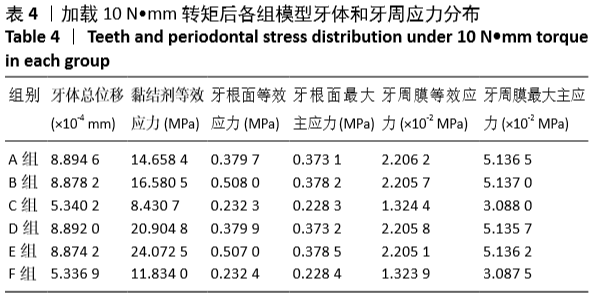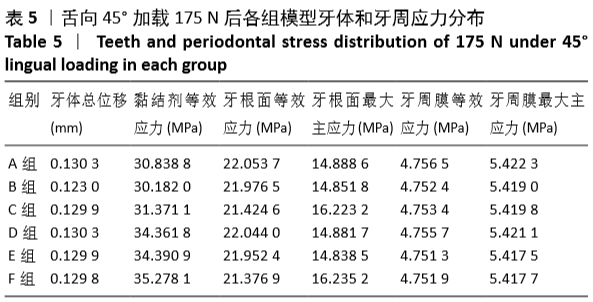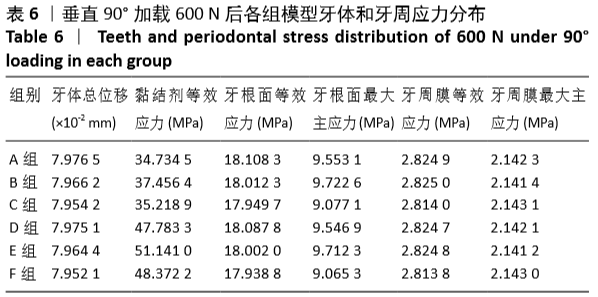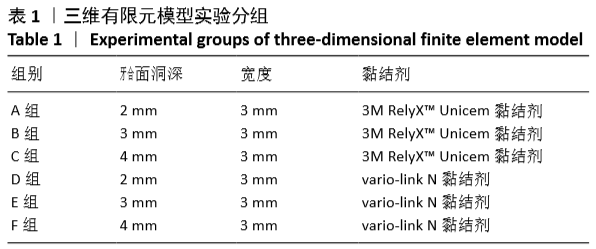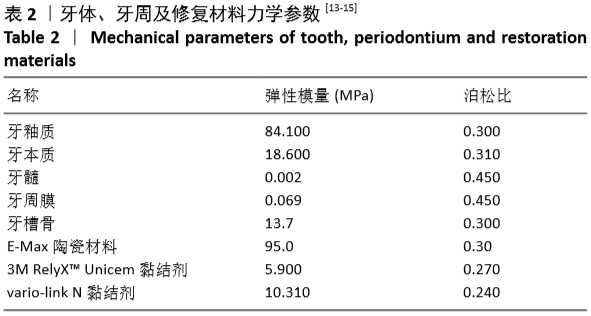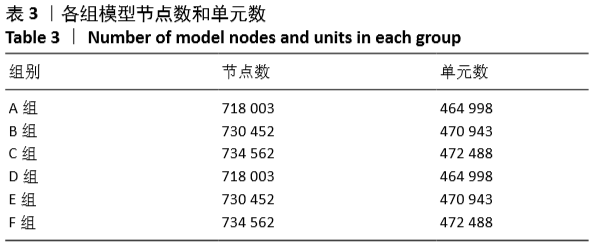中国组织工程研究 ›› 2021, Vol. 25 ›› Issue (4): 537-541.doi: 10.3969/j.issn.2095-4344.2365
• 组织工程口腔材料 tissue-engineered oral materials • 上一篇 下一篇
E-Max瓷嵌体三维有限元模型粘接界面应力分析
张国梅1,祝 军1,胡 杨2,焦红卫3
- 1上海市宝山区罗店医院口腔科,上海市 201908;2新疆医科大学第一附属医院口腔修复科,新疆维吾尔自治区乌鲁木齐市 830054;3上海市口腔病防治院,上海口腔医院,永嘉路特需门诊,上海市 200001
Stress of three-dimensional finite element models of E-MAX porcelain inlay
Zhang Guomei1, Zhu Jun1, Hu Yang2, Jiao Hongwei3
- 1Department of Stomatology, Luodian Hospital of Baoshan District of Shanghai, Shanghai 201908, China; 2Department of Prosthodontics, First Affiliated Hospital of Xinjiang Medical University, Urumqi 830054, Xinjiang Uygur Autonomous Region, China; 3Cavity Prevention Center in Shanghai, Shanghai Stomatological Hospital, Yongjia Road Special Need Clinic, Shanghai 200001, China
摘要:
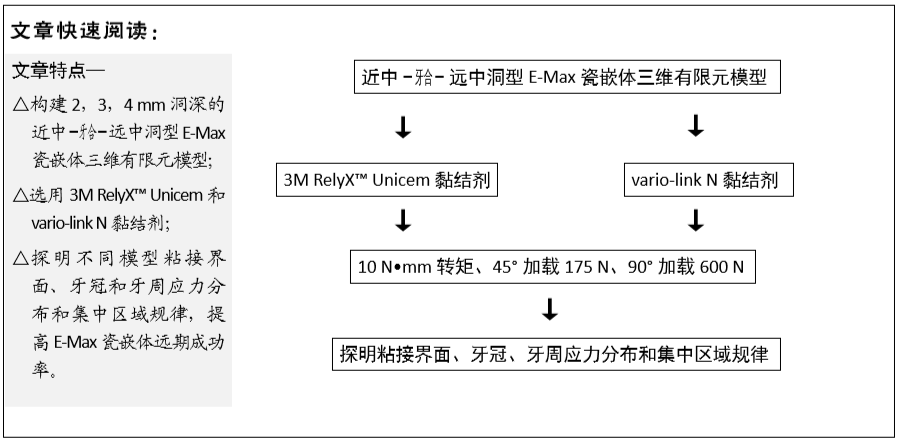
文题释义:
瓷嵌体:嵌体是一种临床应用悠久的口腔修复技术,是嵌入牙体内部用以恢复牙体缺损形态和功能的修复体,属于口腔固定修复体类,具有咀嚼效率高、磨牙量少、异物感较小等特点,金属类嵌体的机械强度高,E-Max瓷嵌体的美学性能和生物相容性较好,在前牙美学区和后牙应力负载较低部位有广阔的应用前景。
三维有限元模型:是指利用计算机数学算法对口颌系统(几何和载荷工况)进行模拟,利用简单而又相互作用的元素(即单元),用有限数量的未知量去推算无限未知量的真实系统,可模拟口颌系统咬合应力施加环境,便于分析咬合应力与修复体、粘接界面和剩余牙体组织的应力状况,优化E-Max瓷嵌体洞型设计和黏结剂选择。
背景:E-Max瓷嵌体具有良好的美学、粘接与机械性能,在牙体缺损修复领域有广阔的应用前景。
目的:构建不同黏结剂和不同洞深的近中-牙合-远中洞型E-Max瓷嵌体修复三维有限元模型,探究不同模型的应力分布和集中区域规律。
方法:利用Micro-CT扫描人下颌第三磨牙,采用医学建模软件mimics 20、逆向工程软件Geomagic Studio 2014、三维机械制图专用软件 NX 10建立不同黏结剂和不同洞深的近中-牙合-远中洞型E-Max瓷嵌体修复三维有限元模型:A组洞深2 mm,使用3M RelyX™ Unicem黏结剂;B组洞深3 mm,使用3M RelyX™ Unicem黏结剂;C组洞深4 mm,使用3M RelyX™ Unicem黏结剂;D组洞深2 mm,使用vario-link N黏结剂;E组洞深3 mm,使用vario-link N黏结剂;F组洞深4 mm,使用vario-link N黏结剂。应用有限元分析软件 ANSYS workbench 18.2进行网格划分,分析各模型在10 N•mm转矩、45°加载175 N和90°加载600 N时的应力分布状况。
结果与结论:①加载10 N•mm转矩时,使用同一黏结剂的情况下,随着洞深度增加模型的牙体总位移、牙周膜等效应力均趋减小,洞深 3 mm时牙根面等效应力、黏结剂等效应力最大;在同一洞深下,使用vario-link N黏结剂模型的黏结剂等效应力和牙根面最大主应力较大;②舌向 45°加载175 N时,使用同一黏结剂的情况下,随着洞深度增加牙根面等效应力趋减小,洞深4 mm时牙体总位移、黏结剂等效应力最大,洞深2 mm时牙周膜等效应力、牙周膜最大主应力最大;在同一洞深下,使用3M RelyX™ Unicem黏结剂模型的牙根面最大主应力、牙根面等效应力、牙周膜等效应力较高,黏结剂等效应力较小;③舌向90°加载600 N时,使用同一黏结剂的情况下,随着洞深度增加模型的牙体总位移、牙周膜等效应力均趋减小,洞深3 mm时牙根面最大主应力与黏结剂等效应力最大,4 mm时牙周膜最大主应力最大;在同一洞深下,使用3M RelyX™ Unicem黏结剂模型的牙根面等效应力、牙体总位移、牙根面最大主应力和最大主应力较高,黏结剂等效应力较小;④结果表明,近中-牙合-远中洞型E-Max瓷嵌体修复三维有限元模型应力集中区域为牙根分叉区、嵌体边缘线、髓室顶、龈壁等,粘接界面和龈壁、根分叉区是应力集中和破坏的重点区域。
https://orcid.org/0000-0002-3185-6560 (张国梅)
中国组织工程研究杂志出版内容重点:生物材料;骨生物材料; 口腔生物材料; 纳米材料; 缓释材料; 材料相容性;组织工程
中图分类号:
